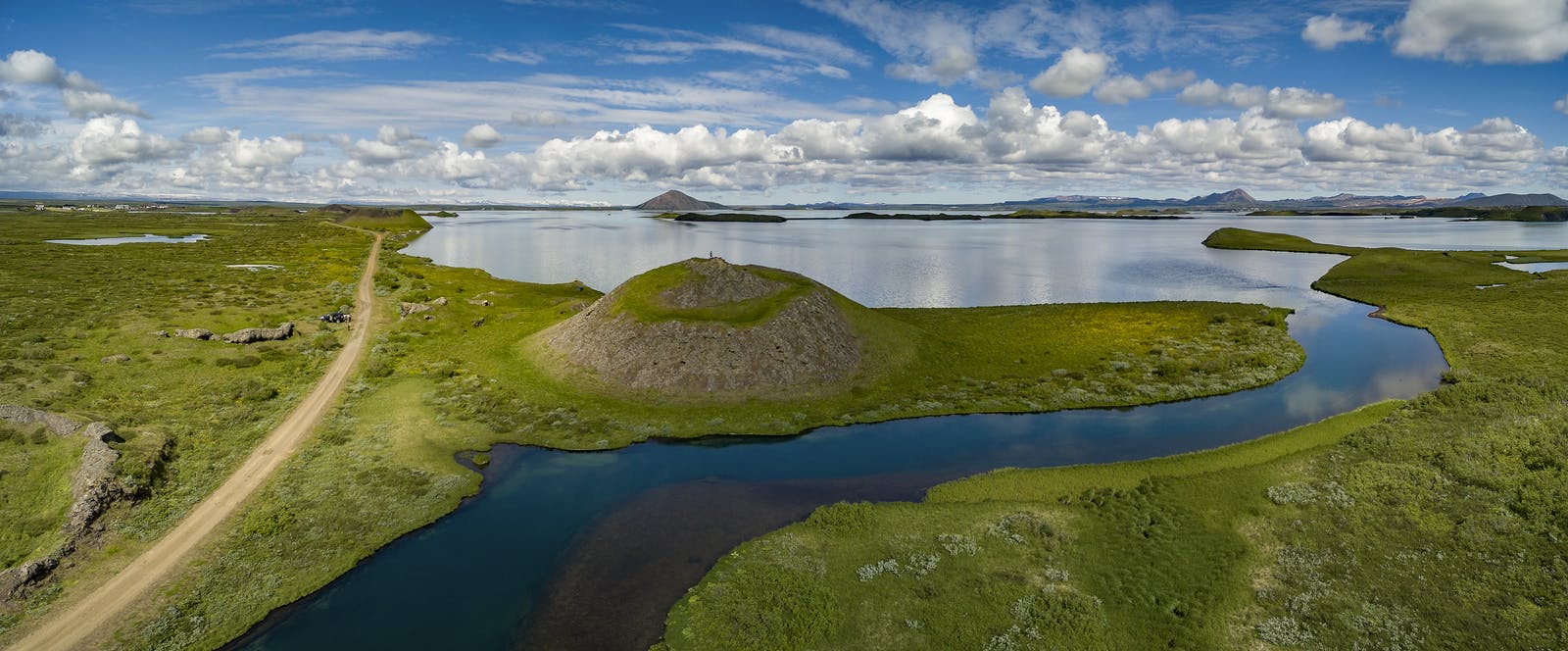
Your Guide to Lake Mývatn
Lake Mývatn is located in northern Iceland, translating to "lake of midges" and pronounced "me-vahtn". It is one of the largest lakes in Iceland, covering around 37 square kilometres. Despite being large, the lake is relatively shallow, with a maximum depth of about 4,5 meters. You will see approximately 40 small islands in the water, which is great scenery.
Mývatn is renowned for its volcanic origins and geothermal activity. The lake got its current shape approximately 2,300 years ago during a volcanic eruption that reshaped an older and larger lake in the area.Various volcanic features, including pseudo-craters, lava formations, and hot springs, characterise its surroundings. T
he region offers a fascinating glimpse into Iceland's geological history. It is also apart of the Diamond Circle.
How To Get to Lake Mývatn From Reykjavík
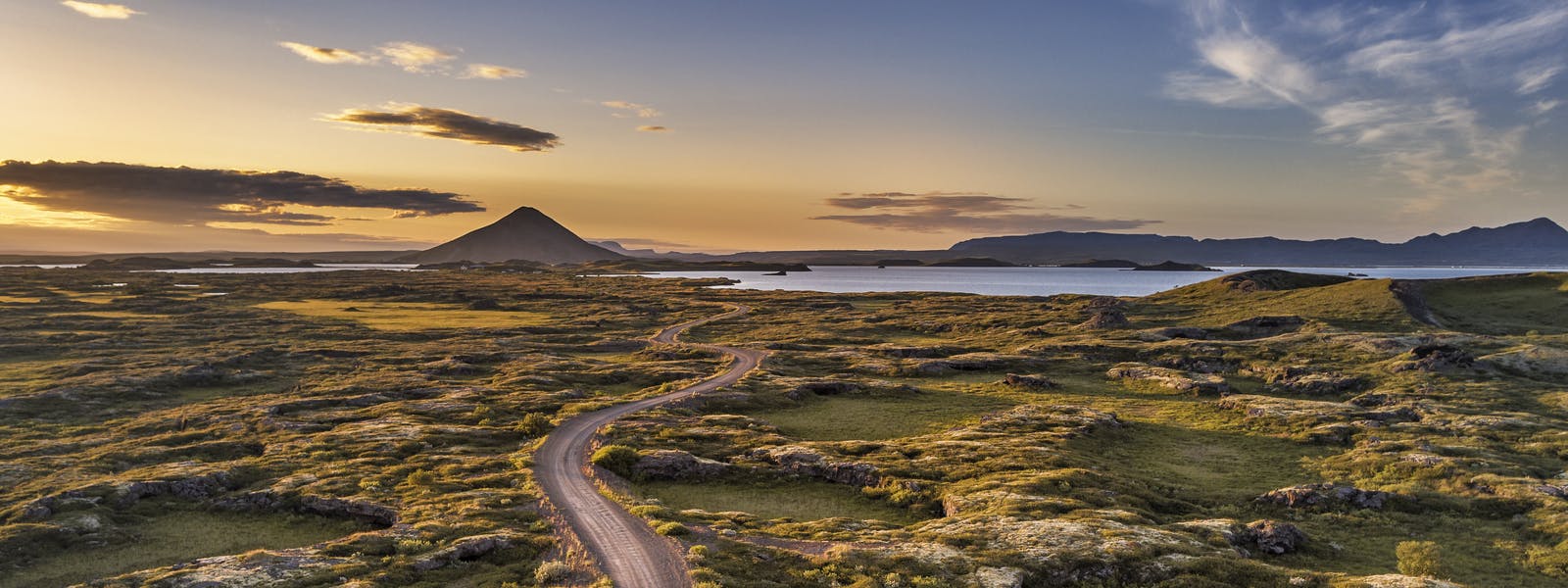
How Far Is Lake Mývatn From Reykjavík?
Lake Mývatn is approximately 280 kilometres (about 174 miles) northeast of Reykjavík if you go by direct line. However, the shortest driving distance is 480 km (298 miles) because roads do not go in a straight line.
Remember that in Iceland, especially in winter, weather conditions can significantly affect travel times, so it's always a good idea to check the weather and road conditions before setting out.
Drive From Reykjavík
You can rent a car and drive from Reykjavík to Lake Mývatn. The driving distance via Ring Road (Route 1) is about 480-500 kilometres (roughly 298-310 miles), and it usually takes around 6-7 hours, depending on road conditions and driving speed.
This road will take you through many of Iceland's most scenic areas, including waterfalls, glaciers, and geothermal hot spots. Check road conditions and weather forecasts before setting out, as conditions can change rapidly, especially in winter. Remember, it's important to take regular breaks on long drives and not rush the journey - there's plenty to see along the way!
Fly From Reykjavík
Suppose you are only stopping in Iceland for a few days and want to shorten the travel time to Lake Mývatn. In that case, you can take a domestic flight from Reykjavík Airport to Akureyri, the closest airport to Lake Mývatn. The flight usually takes about 45 minutes. Once you've landed in Akureyri, you can rent a car and drive to Lake Mývatn, about a 1-hour drive. There are also bus services available from Akureyri to Mývatn.
What To Do in Lake Mývatn
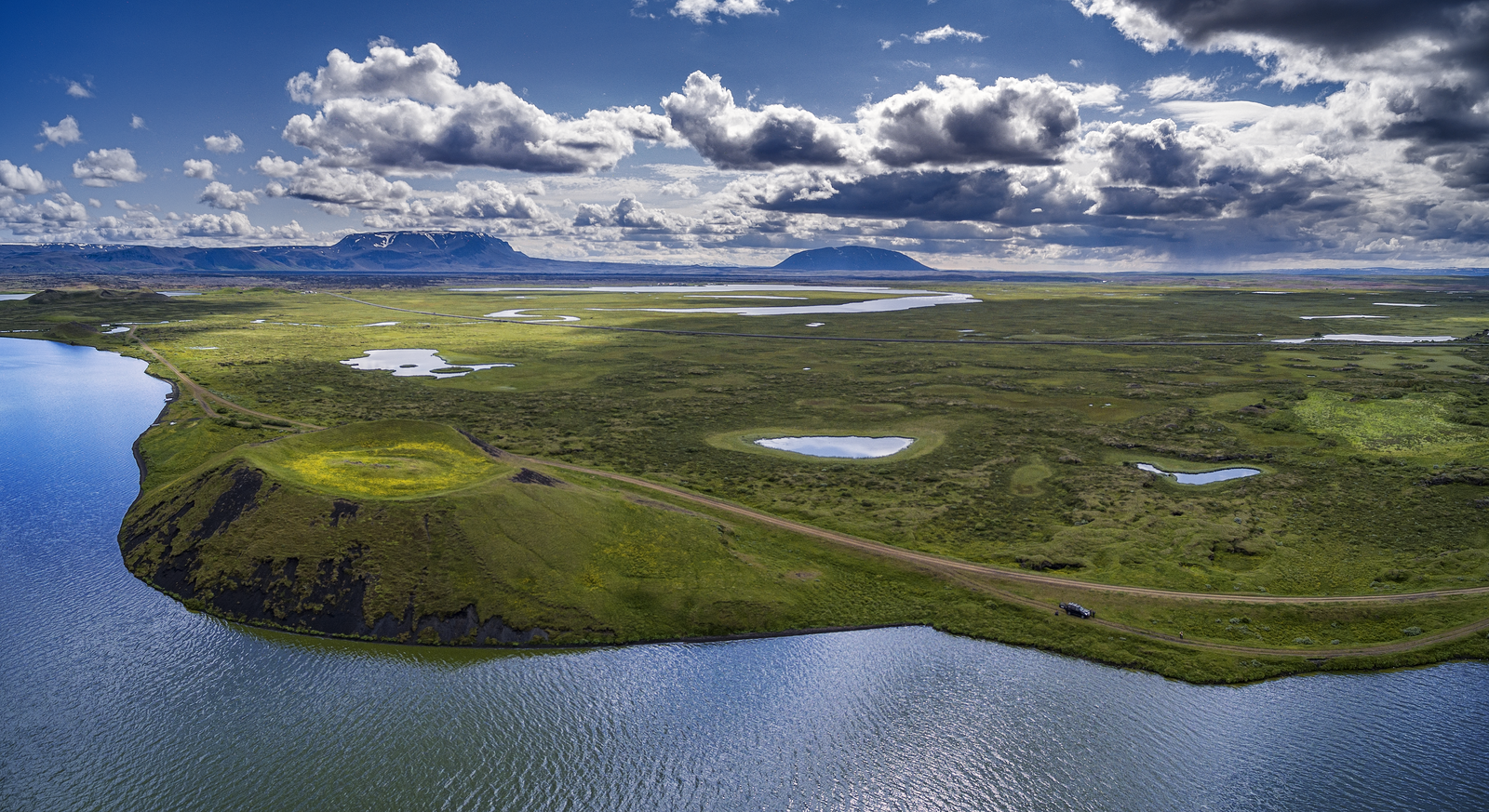
1. Birdwatching
Lake Mývatn is renowned for its abundant birdlife, making it a paradise for birdwatchers. The lake attracts various species, including ducks, swans, geese, and waders. Popular birds include Barrow's Goldeneye, Eurasian Wigeon and Common Loon.
Grab your binoculars and explore the surrounding wetlands and shores to observe the diverse avian population. The Mývatn Bird Museum, located in the nearby village of Reykjahlíð, provides additional information about the region's birdlife.
2. Hiking
Hiking around Lake Mývatn allows you to immerse yourself in Iceland's unique volcanic landscapes, witness breathtaking views and discover the wonders of this remarkable region. Here are some popular hiking trails and notable destinations for hikers:
- Hverfjall Crater: Hverfjall, also known as Hverfell, is a massive tephra cone east of Lake Mývatn. It offers an impressive hiking experience with steep slopes and a well-defined trail leading to the crater rim. The hike to the top provides panoramic views of the surrounding volcanic landscapes and the lake.
- Dimmuborgir: a remarkable lava field near Lake Mývatn known for its eerie rock formations, lava pillars, and caves. Several hiking trails wind through this surreal landscape, allowing you to explore the unique geological features and soak in the mystical atmosphere.
- Krafla: The Krafla volcanic and geothermal area, northeast of Lake Mývatn, is a geologically active zone with fascinating hiking opportunities. The Víti Crater is a popular destination within Krafla, offering a volcanic crater filled with a vivid turquoise-coloured geothermal lake. The hike around Krafla takes you through other volcanic features, such as lava fields and steaming fumaroles.
Be mindful of fragile ecosystems and follow Leave No Trace principles, respecting nature and leaving the trails as you found them.
3. Geothermal and Nature Baths
While there are no natural geothermal baths directly at Lake Mývatn itself, there are nearby geothermal baths in the Mývatn region where you can relax and enjoy the soothing hot waters. Here are a few notable options:
- Mývatn Nature Baths: also known as the "Blue Lagoon of the North," is a popular geothermal spa located about 4 kilometres (2.5 miles) east of Lake Mývatn. It features a large geothermal pool with mineral-rich waters and stunning volcanic landscapes. The water temperature is around 36-40°C (97-104°F), making it a perfect place to unwind and rejuvenate. The facility also offers steam baths, saunas, and a restaurant.
- Jarðböðin Nature Baths: situated in the nearby village of Mývatnssveit, is another geothermal spa option. It features a series of interconnected geothermal pools varying in temperature and size. The waters are rich in minerals and renowned for their therapeutic properties. The facility offers changing rooms, showers, and a café.
4. Cave Exploration
Cave exploration around Lake Mývatn offers a thrilling opportunity to discover the hidden underground world of Iceland. While there aren't many extensive cave systems directly around Lake Mývatn, there are a few notable caves in the wider Mývatn region. Here are a couple of caves worth exploring:
- Grjótagjá: a small lava cave connected to a large fissure in the lava near Lake Mývatn. It gained popularity due to its geothermal hot spring, which was once a popular bathing spot. During the Krafla Fires (1975-1979) the water temperature increased up to 60°C but has since been slowly decreasing. Swimming in the hot spring is still prohibited due to fluctuating water temperatures and safety concerns. Nonetheless, you can visit Grjótagjá to explore the cave's interior, admire the unique rock formations, and learn about its fascinating history.
- Lofthellir Cave: located in the highlands approximately 40 kilometres (25 miles) from Lake Mývatn, is an exciting underground destination. It is a lava cave, known for its impressive ice formations, including ice sculptures and stalagmites, created by freezing lava. Exploring Lofthellir Cave requires joining guided tours, as the cave can be challenging to navigate without proper equipment and knowledge of the area.
Experience Icelandic Nature in Reykjavík
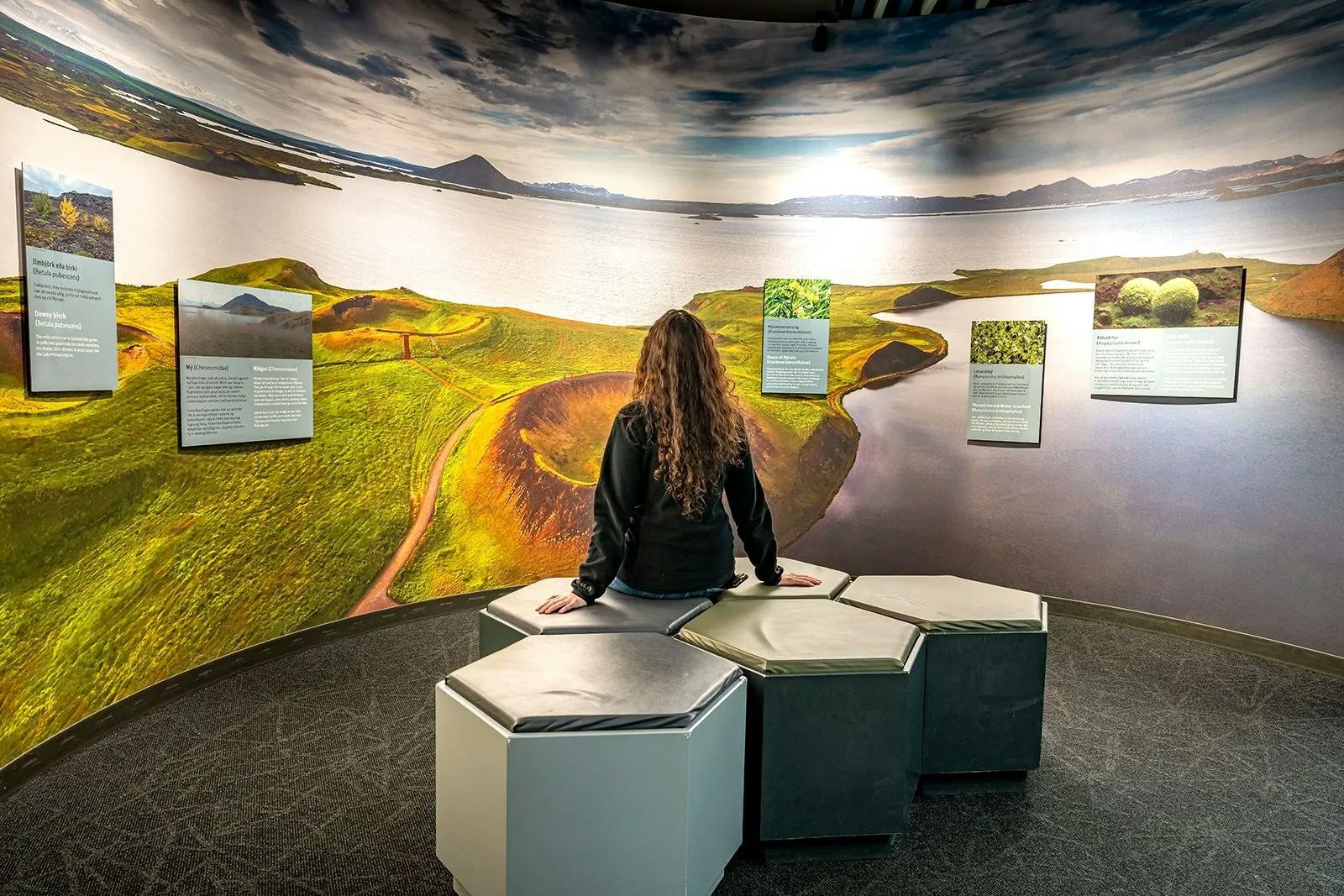
Step into the world of Icelandic nature at Perlan's interactive museum, a must-see destination for anyone visiting Reykjavík. The museum's stunning exhibitions, designed with cutting-edge technology and immersive multimedia displays, offer visitors a unique opportunity to explore Iceland's diverse landscapes without ever leaving the city.
Among the museum's highlights is the incredible "Water in Icelandic Nature" exhibit. This fascinating display showcases water's essential role in shaping and sustaining Iceland's unique environment. It delves into the abundant life that thrives in aquatic ecosystems and underscores water's crucial role in shaping and transforming the landscape.
Lake Mývatn FAQ
How far is Lake Mývatn from Reykjavík?
Lake Mývatn is approximately 480-500 kilometres (298-310 miles) from Reykjavík by road.
Can you fly from Reykjavik to Lake Mývatn?
There are no direct flights from Reykjavík to Lake Mývatn. However, you can fly to Akureyri and then drive for about an hour to Lake Mývatn.
When do midge flies die down at Lake Mývatn?
The midge flies at Lake Mývatn are typically most active in the summer, particularly from June to August. They start to die down in late August and are generally gone by the beginning of September.
How to pronounce Mývatn?
Mývatn is pronounced "me-vahtn" with emphasis on the first syllable.
What river drains into Lake Mývatn?
No river drains into Lake Mývatn. The Laxá River is the runoff of Lake Mývatn.
Popular tours
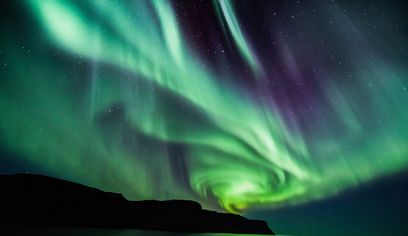
The #1 Northern Lights Tour in Iceland | FREE photos, Homemade Hot Chocolate & cinnamon buns

Reykjavík Northern Lights Cruise

Aurora Basecamp Night pass

Reykjavík Whales & Northern Lights

Northern Lights Tour from Reykjavik, With Photographs, Local Pastrys and Hot Chocolate

DT 310 Private Superjeep Northern Lights

NORTHERN LIGHTS AND STARGAZING (Guided in 10 languages)

GOLDEN CIRCLE AND NORTHERN LIGHTS (Guided in 10 languages)

Aurora Viking - The Private Tour - Northern Lights Tour

Northern Lights w/Aurora Viking - free pro photos - Free Retry – minibus
